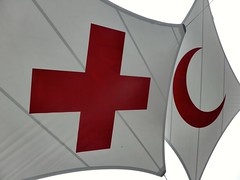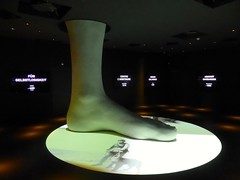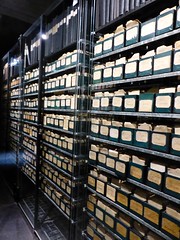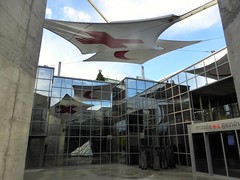The Museum of the International Red Cross and Red Crescent is one of the top museums to see in Genève, Switzerland. The Humanitarian Adventure is the exhibition theme.
The Musée international de la Croix-Rouge et du Croissant-Rouge is one of the best-known museums in Geneva, Switzerland. The museum’s permanent collection “The Humanitarian Adventure” is currently divided into three exhibitions: defending human dignity, restoring family links, and reducing natural risks. It is best to think of the museum in terms of these three very modern exhibitions rather than a traditional museum with clear information on the history and work of the International Red Cross.
International Red Cross Museum in Geneva
The Museum of the International Red Cross and the Red Crescent in Geneva reopened in mid-2013 after a two-year remake with a new exhibition entitled “The Humanitarian Adventure”. This permanent collection of the museum is divided into three sections: defending human dignity, restoring family links, and reducing natural risks. The exhibitions are very modern with several interactive displays but are a bit short on details and information on the Red Cross.
Admission includes the use of an audio guide that switches on automatically (but sometimes not) with further details on some exhibitions available by punching in the numbers. Written descriptions are very cryptic, when available at all.
The exhibition starts with a “Chamber of Witnesses” – twelve life-sized figures standing in a semi-circle in a darkish room. No explanation is given of its purpose, and although visitors see these figures again later in testimonies given at the end of exhibitions, it is simply confusing at the start of the exhibitions. Many visitors wander around enquiring from others if their audio guides are working before finding their way down the stairs to the main museum display floor with the three exhibitions.
Defending Human Dignity Exhibition in the Red Cross Museum
The Defending Human Dignity exhibition in the Red Cross Museum has a small display on Henry Dunant, who founded the Red Cross in 1863. Also on display are the original Geneva Convention, a few items used to identify the Red Cross, and listings of some major events in the protection of human dignity – the oldest goes back to 1750 BC (“The King of Babylon expresses his will that the strong should not oppress the weak” in the Code of Hammurabi).
A number of artworks by prisoners made in various parts of the world is displayed but with limited information on the circumstances. The works do show the importance of mental stimulation and creativity to preserve dignity in difficult and unjust circumstances.
Restoring Family Links
The Restoring Family Links exhibition starts out much as can be expected of a museum: the archives of World War I prisoner records that the Red Cross used to provide information and reunite families. At four desks, visitors can go through the process of checking information and index cards and experience the process. However, on a busy day, it is probably not worth the wait.
A wall of small photos of children from Rwanda and a sheet used at Srebrenica to distribute information are very moving. However, the explanations and information on how the Red Cross unite families with modern technology are a bit lacking.
Reducing Natural Risks
The Reducing Natural Risk exhibition, even more than the other two, has a feeling of a temporary additional display rather than being part of a permanent collection of a museum. The displays here are hard to follow or to comprehend why they are on show in the first place.
The exhibition starts with a large round touch screen table with a video game of saving as many villagers as possible from a natural disaster. Teens and students enjoyed slapping the screen but most other visitors looked on a bit bewildered – a nice piece of technology but the educational value seems close to zero.
The rest of the exhibition is downright confusing. A couple of Red Cross posters without much explanation why these were selected and video displays without any explanation of when, where, or why – an odd way to celebrate “One Hundred Years of prevention”.
A large part of the space is taken up by behind-the-scenes of presumably making a disaster prevention warning video. However, no explanation is given of the purpose or reason. Maybe the audio guides were supposed to have worked automatically here but they did not and there was no text to explain any of it.
On the Spot
Back on the ground floor, the “On the Spot” exhibition has some information on the day-to-day Red Cross and Red Crescent operations around the globe. The main focus in this room is a large globe, which looks good, but otherwise information is simply given by touch screens – much like browsing the internet. A further set of touch screen highlight in chronological order major humanitarian events throughout history.
Style over Substance?
The exhibitions in the Red Cross Museums are very well done and look very good but that is part of the problem: it is easy to leave with a feeling of style over substance. The museum has remarkably little information on the International Committee of the Red Cross, its history, or its current activities. It uses quite a large space to tell disappointingly little about a very worthy organization that deserves much more attention.
The various testimonies by humanitarian workers and victims are interesting but take up a lot of physical space. Even on a quiet day, the lone seat or small spaces fill up fast and it is either a long wait or missing these all together.
The architects of the three exhibitions give interesting explanations of why they have selected specific materials in designing the exhibition spaces. Unfortunately, that is easily lost on visitors and the curators failed to fill the space with much content.
The Red Cross Museum is interesting to visit but many visitors expecting a traditional museum with information on the history and activities of the International Committee of the Red Cross may well leave rather disappointed – Wikipedia has more information than the museum.
Visitor Information for the Red Cross Museum in Geneva
The Museum of the International Red Cross and Red Crescent is open Tuesday to Sunday from 10 am to 5 pm (closing at 6 pm from April to October). The museum is closed on Monday, December 24, 25, 31 and January 1.
Admission tickets are rather pricy at CHF15 for adults, and CHF7 for 12-22 and over 65-year olds, and free for children under 12. Temporary exhibitions may sometimes be seen separately for CHF5. The Swiss Museum Pass and Geneva Pass are valid. Railaway discount offers may be available for visitors arriving in Genève by train.
The Red Cross Museum is at Avenue de la Paix 17, 1202 Genève – across the road from the car entrance to the United Nations Offices. Free parking is available in the region but busy during the week.
The Red Cross Museum can easily be reached by bus 8 (direction Appia or OMS) from Geneva train station, or from Geneva Airport by bus 28 (direction Jardin Botanique). Bus stop Appia is directly at the museum. It is also a pleasant uphill stroll from Place de Nations with many further bus and tram connections.





